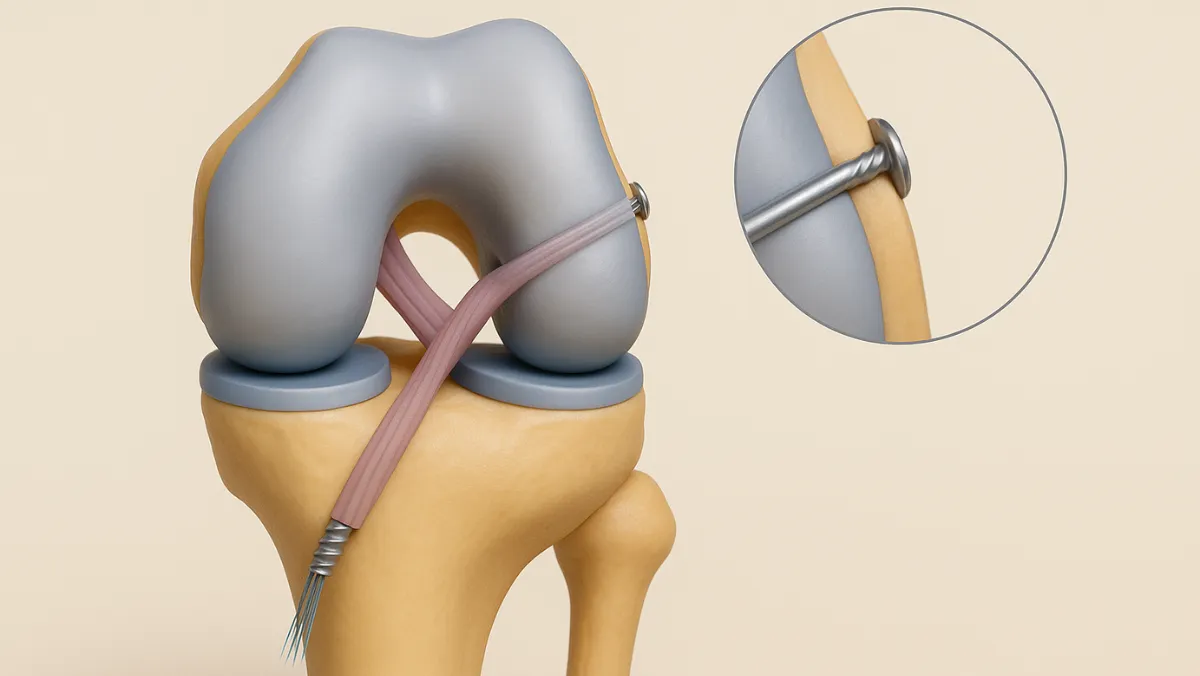
Safety Rate
The Anterior Cruciate Ligament (ACL) is one of the most important stabilizing structures in the knee joint. It prevents the tibia (shin bone) from sliding too far forward relative to the femur (thigh bone) and maintains rotational stability during running, jumping, or pivoting. An ACL tear is a common yet serious knee injury, especially in athletes and active individuals, often caused by sudden pivoting, twisting, or direct trauma. When the ligament is completely ruptured and non-surgical treatment cannot restore stability, arthroscopic ACL reconstruction is performed to rebuild the ligament and restore full knee function.
Arthroscopic ACL reconstruction is a minimally invasive, “keyhole” surgical technique performed through small incisions using an arthroscope (a thin tube with a camera). This allows the surgeon to visualize the inside of the knee on a screen and carry out the reconstruction with precision, causing less tissue trauma, reduced scarring, and faster recovery compared to traditional methods.
Rehabilitation begins almost immediately after surgery and is critical for long-term success. The process is phased and includes:
Arthroscopic ACL reconstruction provides excellent outcomes for most patients. Benefits include:
When performed by skilled surgeons and supported with structured rehabilitation, arthroscopic ACL reconstruction allows patients to regain mobility, confidence, and performance within 6–9 months.
The recovery period for arthroscopic ACL repair typically takes about 6 to 9 months, depending on the severity of the injury and the patient’s dedication to rehabilitation. Most individuals begin light activities within a few weeks, with gradual progression to strengthening and balance exercises. Full recovery, including return to sports or intense physical activity, usually requires consistent physiotherapy. Following your surgeon’s guidance ensures a safe, complete recovery and restores knee stability and flexibility effectively.
Many people wonder, how did Mark Zuckerberg tear ACL? The Meta CEO sustained the injury while training for a mixed martial arts (MMA) competition, which likely involved sudden twisting or impact on his knee. Such movements can strain or tear the anterior cruciate ligament. His experience highlights how even well-trained individuals can suffer sports-related ACL injuries. Fortunately, with advanced arthroscopic surgery and proper rehabilitation, patients—including athletes—can expect strong recovery and return to full physical activity.
While no procedure is perfect, ACL surgery has a very high success rate—typically above 90%—when performed by experienced orthopedic surgeons. The outcome depends on the type of injury, surgical precision, and patient commitment to rehabilitation. Most people regain knee strength, flexibility, and stability after completing physiotherapy. Advances in arthroscopic techniques and graft materials have significantly improved results, helping patients return to sports, daily activities, and an active lifestyle with long-lasting, positive outcomes.
Take the first step towards pain-free living. Book your consultation today and discover personalized treatment options tailored to your needs.